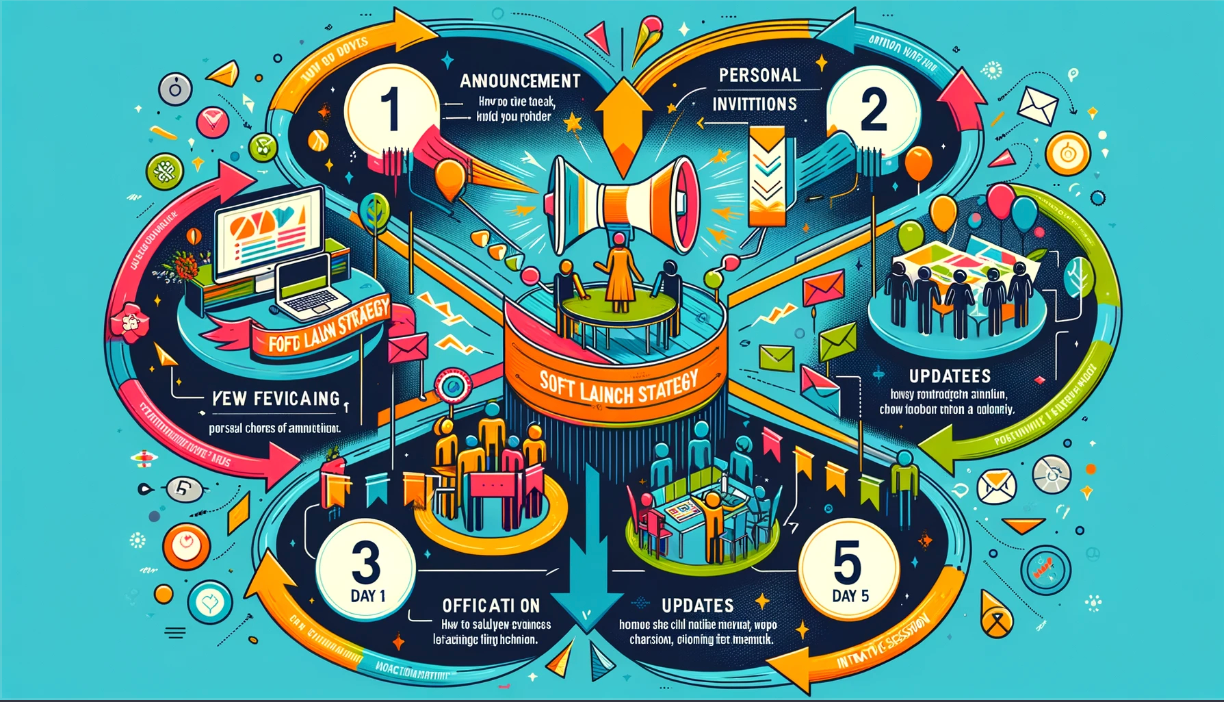Five Soft Launch Steps for Your Community Initiatives
Done right, a soft launch will help you build trust and momentum while you also learn about your members. You'll have a 'go' or 'no go' from those whose opinions matter most, saving you and your community members invaluable time and energy.

"How do I know if my new product or project will resonate within my community?"
Fear of failure can be paralyzing when considering launching something new in an established group.
However, a straightforward and effective process significantly increases your chances of success.
This methodology helps you navigate the process of engaging or monetizing your community with direct feedback from your members.
Done right, a soft launch will help you build trust and momentum while you also learn about your members. You'll have a 'go' or 'no go' from those whose opinions matter most, saving you and your community members invaluable time and energy.
Let's dive in!
The Soft Launch Strategy
Implementing a soft launch through trial groups is key. Inviting a select group from your community to test and provide feedback on your new concept allows you to gather crucial insights. This approach isn’t just a trial; it’s an opportunity to build trust and inform your wider community about upcoming changes or offerings.
Early Adopters as Community Catalysts
Participants in these trial groups often become early adopters and champions of your project. Their support and promotion within the community can be invaluable, especially in creating a positive initial reception for your new project.
It also sends a clear message that community input and engagement is valued here – a really important signal.
The Five-Day Soft Launch Strategy
To mitigate these risks, a five-day soft launch process can be incredibly effective. This approach allows for gradual introduction and feedback, ensuring alignment with community needs and interests.
Day 1: Announcement
Start by announcing the upcoming project or product. Keep it high-level and intriguing, sparking interest among your members.
Explain the outcomes for them – you will learn this, get this, achieve that.
Here's the key part: tell them you are doing a pilot first with a small group. Give clear instructions on how they can apply and what the commitment is.
Day 2: Personal Invitations
Send direct messages or emails to select members, inviting them to participate in the trial.
Personalized invites can increase engagement and show members they're valued. You can even name the group something fun – "Become a pioneer" is much better than "Try this thing I am not sure will work out."
Day 3: Quick Update
Share an update based on initial reactions to the announcement. You might have some updates based on member questions or from the applications.
You can update the community on the number of slots left and the countdown to the event. This can lead to more sign-ups or simply more questions/feedback on the original post - both are good!
Day 4: Interactive Session
Host an interactive session for interested members. Use this opportunity to delve deeper into the project, gathering more nuanced feedback and gauging interest levels.
Do this just before closing the doors to the pilot. This is a PR move and a forcing function. You'll be spreading the word and will have to speak clearly about what you are building. Remember to have that sign up link.
Day 5: Official Kickoff
Launch the pilot project or product with clear instructions for participation and feedback. Emphasize that this is a collaborative process, and member input is crucial.
For all the folks who "didn't make it" to the pilot, have a message explaining there was too much interest, but they'll have the first chance to get the new thing if it makes the cut! Encourage them to stay tuned for other future updates.
The Final Word: Navigating with Confidence
Using a structured approach provides directionality and a safety net when introducing new projects to your community.
You don't need to guess when you have a community – you work with them.
This strategy elevates the chance of your project's success and deepens the relationship with your community members. Another community win-win!
